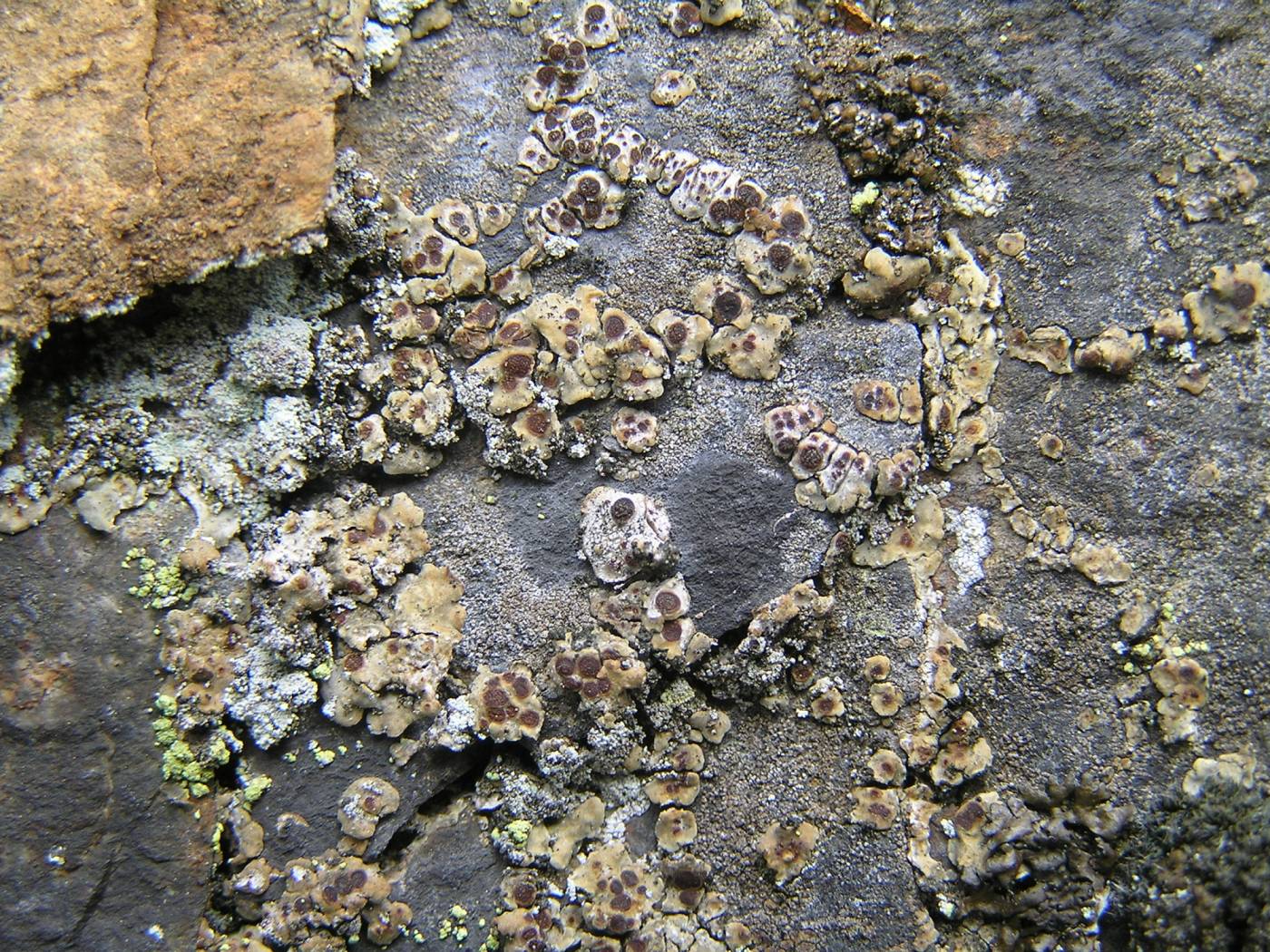Myriospora myochroa has usually large pale brown squamules up to 5 mm wide with multiple punctiform apothecia. The species may produce norstictic acid in small amounts that can only be detected with thin-layer chromatography. Westberg et al. (2011) states that even spot test negative specimens have crystals positive in polarized light in the cortex but some specimens also produce no crystals of secondary metabolites. Its high hymenium (120–230 μm tall) and interrupted algal layer easily identifies it as a Myriospora.
It occurs in Asia (Siberia), Europe and Alaska at a wide range of elevations on acidic siliceous rock often in rock under hangs. In the Czech Republic, it is scattered and known mainly from mountains. Acarospora smaragdula var. murina f. macrophylla, described from Mt Keprník in Hrubý Jeseník, had some squamules 10 mm wide and in fact belongs to Myriospora myochroa.
Literature: Westberg M., Crewe A.T., Purvis O.W. & Wedin M. (2011): Silobia, a new genus for the Acarospora smaragdula complex (Ascomycota, Acarosporales) and a revision of the group in Sweden. – Lichenologist 43: 7–25.
taxonomic classification:Ascomycota → Lecanoromycetes → Acarosporales → Acarosporaceae → Myriospora
Red List (Liška & Palice 2010):NT – near threatened
Red List (Malíček 2023):DD – data deficient
Occurrence in the Czech Republic
All records: 12, confirmed 0. One click on a selected square displays particular record(s), including their source(s).
